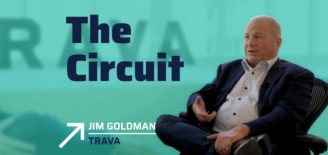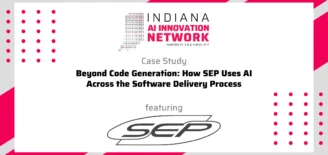How to Build a Better Prospecting List
Whether you are a young, growing company, or an established organization, if your solution has the ability to target a large range of industries it can be tough to know where to start.
Building a lead generation campaign when you don’t know to whom you are selling takes some ingenuity, but it can be done. Here are a few ways to make your program succeed.
Assess your current client base.
I recently spoke with an executive considering investing in a prospecting event. He asked, “Where do I start with building my prospect list? All my clients are in different industries and are different sizes. How do I know what to target first? Where can I make the best investments in our customer database?”

Current clients are an effective starting point when building a lead generation prospecting list. Evaluate the clients who you would want to replicate over and over again.
- What are some of our recent client wins?
- Which clients have been with us the longest?
- Which clients drive the most top line revenue?
- Which clients have had the best profitability as a result of our solution or program?
- What are the roles/titles of prospects that drove the deal or handled the implementation?
Build smaller lists.
Marketers often assume that building a large list with thousands of contacts will be the most productive first step. However, bulk lists of arbitrary leads can result in fruitless investments in off-target contacts and companies as well as watered down value statements and messaging.
Based on the above analysis, select 2-3 segments to test. Using these list segments creates an opportunity to benchmark top-performing campaigns so any future segments can then be measured against watermark of performance.
We typically do “test kitchen” campaigns using approximately 50-100 contacts in each segment. This can include multiple contacts per account with different title paths. Decision makers and ideal prospects can vary based on industry and company size. Take a client example from each industry and answer these questions as a starting point to building your lists of ideal titles:
- Who signed the contract?
- Who else was involved as an influencer in the decision cycle?
- With whom did I have my first sales discussion?
- Do I anticipate these roles changing based on company size in this same industry?
Avoid blanketed and identical campaigns.
Mass marketing without an intentional dataset or message leads to missed opportunities with prospective clients. You also miss the chance to measure campaign performance by industry.
Lack of intentional data and messaging leads to negative response ratios and uninformed “no responses,” in which people reject meetings because they do not think you understand their industry and needs.
Craft strategic messaging for individual campaigns.
When in doubt about what message to deliver to a specific market, use A/B testing to craft two distinct messages and measure the positive response as well as the “no interest” rates. When looking at these “no interest” responses, ask yourself the following questions and incorporate what you learn into your message:
- What are the common elements in these responses that I can address more proactively in my scripts?
- What existing technologies or solutions do these targets have in place?
- What types of technologies does my application compliment?
Compare against the benchmark.
Compare post-campaign performance by segments to see if they yield ideal results. As you track the pipeline of campaigns, assess how industries compare at each step in the process. Remember to track closed revenue, as this drives company growth more than the lead conversion rate.
Scale campaigns based on results.
Measuring the success by segment will allow a company to validate assumptions about which markets will drive business growth. One of our clients believed that financial services was their top performing industry and should receive 80% of the effort. However, upon testing other industries against the financial services benchmark results, they identified two other industries with three times higher response. This analysis not only determines area of greatest success, it can also help determine the percentage of investment and energy that is relevant by segment.
- Trending market opportunity – Look at which industry trend, time of year, trade show or fiscal budgeting by industry will lead to more buying decisions.
- Consistent buying market – This is driving 40-60 percent of top line revenue, and a proven need that has been established. You are actively marketing to this group year-round.
- Test market – An effort to continually test industry verticals or solution offerings to identify new opportunities for revenue growth.
LeadJen is a B2B lead generation company that helps corporate sales and marketing teams drive more revenue and better understand their market. LeadJen’s scientific approach, proven methodologies and market intelligence drives revenue for clients in various industries including healthcare, manufacturing, retail, financial services, life sciences and high tech. Based in Indianapolis, LeadJen is an Inc. 5000 company. Founder Jenny Vance is recognized by the Sales Lead Management Association as one of the 50 Most Influential People in Sales Lead Management and was named a 40 Under 40 by both Direct Marketing News and the Indianapolis Business Journal. More information is available at www.leadjen.com and on Twitter @LeadJen_LLC.





































